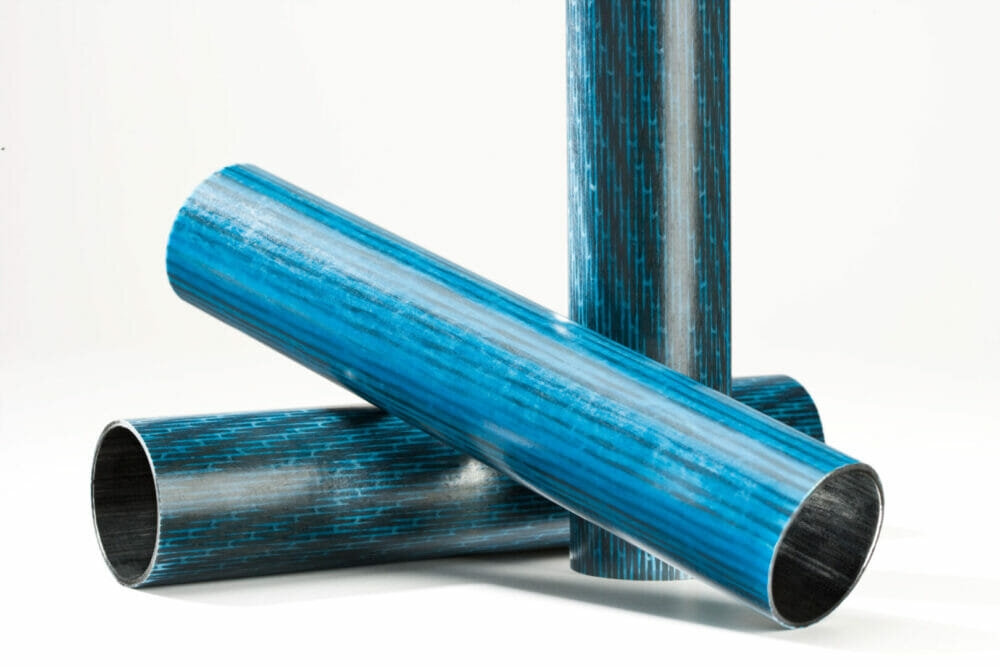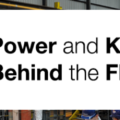In straight tubes, any force applied to the cylindrical wall causes hoop stress. Tool handles, a mop handle for example, experience hoop stress when being used actively or roughly handled. To ensure composite tubes can meet these challenges, the profiles must be manufactured with cross-aligned fibers, providing extra stiffness and high mechanical strength in transverse direction. Here Lauri Turunen, product business owner for tubes, tool handles and telescoping poles and pull-winding expert at Exel Composites, compares different manufacturing techniques and explores how the continuous manufacturing technology of pull-winding can achieve high hoop strength.

The orientation of fibers in a composite profile has a significant impact on its mechanical properties. A typical alignment is unidirectional, where reinforcements are aligned in the longitudinal direction of the profile and provide good axial strength. Cross-wound reinforcements improve transverse stiffness and strength. Fabrics are also used and typically provide +/- 45 or +/- 90 degree alignments. To facilitate this, popular manufacturing techniques like filament winding and pre-impregnated materials (prepreg) are commonly used.
Prepreg and filament winding
Prepreg achieves hoop strength by impregnating fibers (typically fabrics) with epoxy-resin and rolling the resulting material around a steel mandrel to be cured. This is like filament winding, where fibers are wound around a steel mandrel in a transverse direction, aligning the fibers in a desired pattern or angles.
Both processes allow manufacturers to precisely control the fiber-to-resin ratio and ply thickness, but often require longer, energy-intensive curing processes that involve heating or cooling steps. This, combined with the high number of manual steps involved in the filament winding process, makes the technique better suited for manufacturing thick tubes with large diameters.
In addition to the technical considerations, expense is also a factor. Because both filament winding and prepreg rolling involve move manual processes than continuous manufacturing techniques, such as pultrusion and pull-winding, they often have high labor and resource costs and can take longer to produce the equivalent composite profiles.
This is leading many industries to turn to other, more cost-effective processes for manufacturing composite profiles with high hoop strength, which is important for example in telescopic pole applications where you must lock tubes by squeezing the surface with locks, creating hoop stress to the tube.
Considering pull-winding for high hoop strength
Like pultrusion, pull-winding involves pulling fibers through a resin bath and heated die for curing into the desired profile. The main difference, however, is that some of the fibers are helically wound around a mandrel in transverse direction before being pulled through the heated die. While not dissimilar from filament winding, pull-winding allows for greater control over fiber placement and tension, resulting in more uniform and predictable hoop strength.
Pull-winding is particularly useful for manufacturing thin-walled composites with high hoop strength because it allows for precise thin transverse fiber layer control. This is achieved by combining the unidirectional alignment of fibers with the helical winding, resulting in the ability to control fibers from 0 to almost 90 degrees. Furthermore, pull-winding is highly automated and repeatable, ensuring high-volume, cost-competitive production across a single, in-line manufacturing process.
Exel Composites specializes in continuous manufacturing techniques like pull-winding and combines this expertise with a forward-thinking, collaborative approach. For example, Exel will discuss options and possibilities with a customer throughout the development process, ensuring product design and development is optimized for each given customer’s specific requirements. This allows the company to work with you to develop the optimal high hoop strength composite tube for your application, giving you a solution that is lightweight and cost-effective, without sacrificing mechanical performance.
Find out more about Exel Composites’ pull-winding process on the website. www.exelcomposites.com/guide-to-composites/our-manufacturing-processes/.








